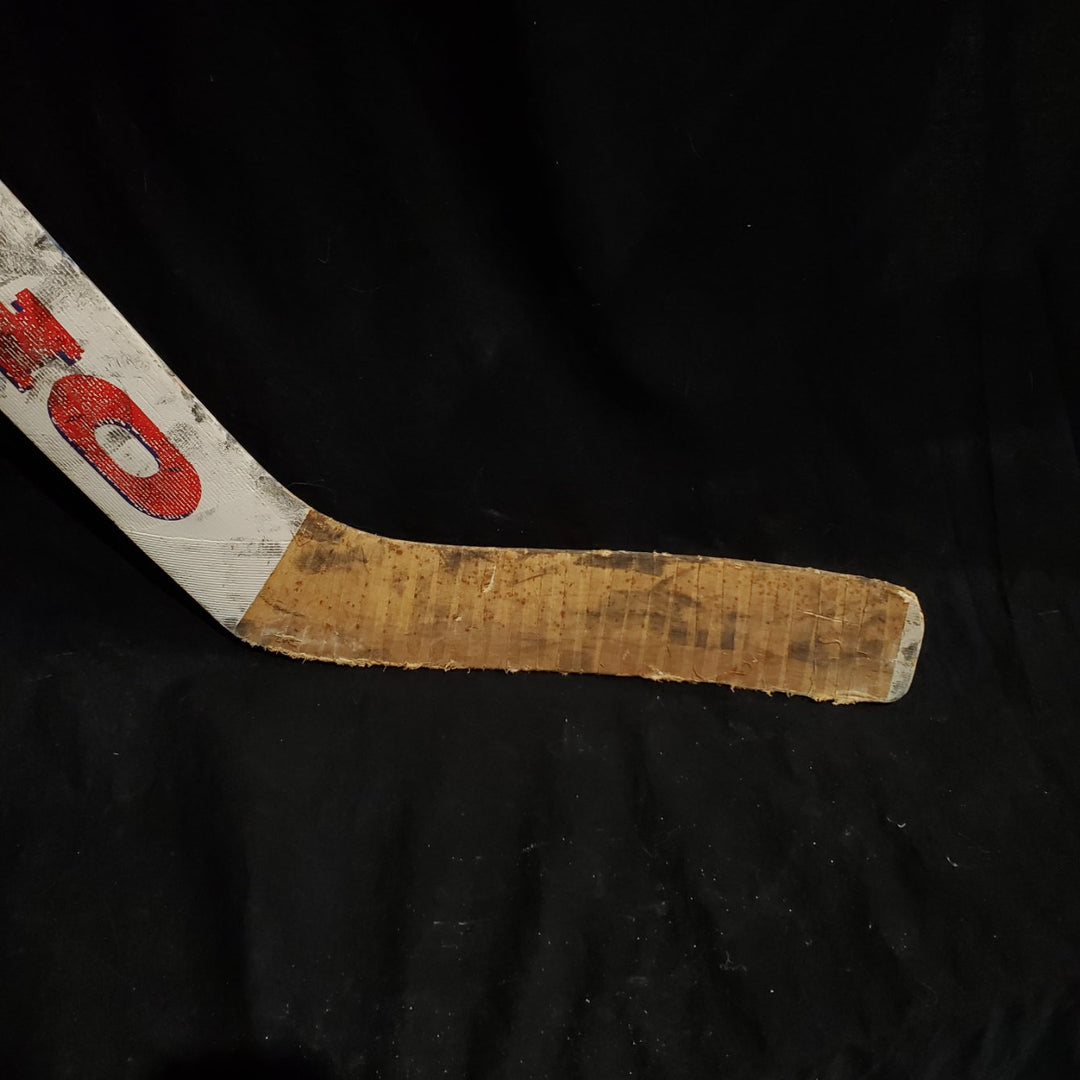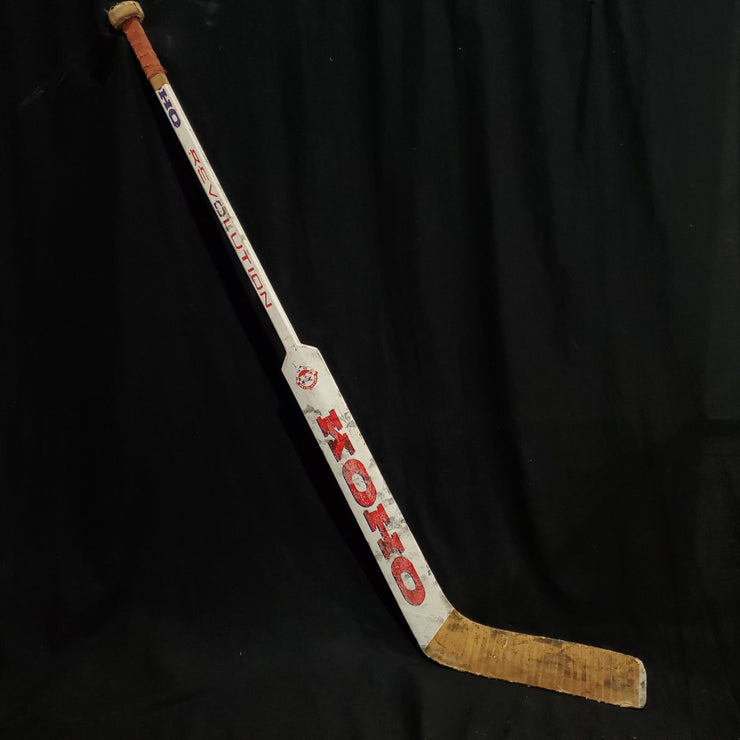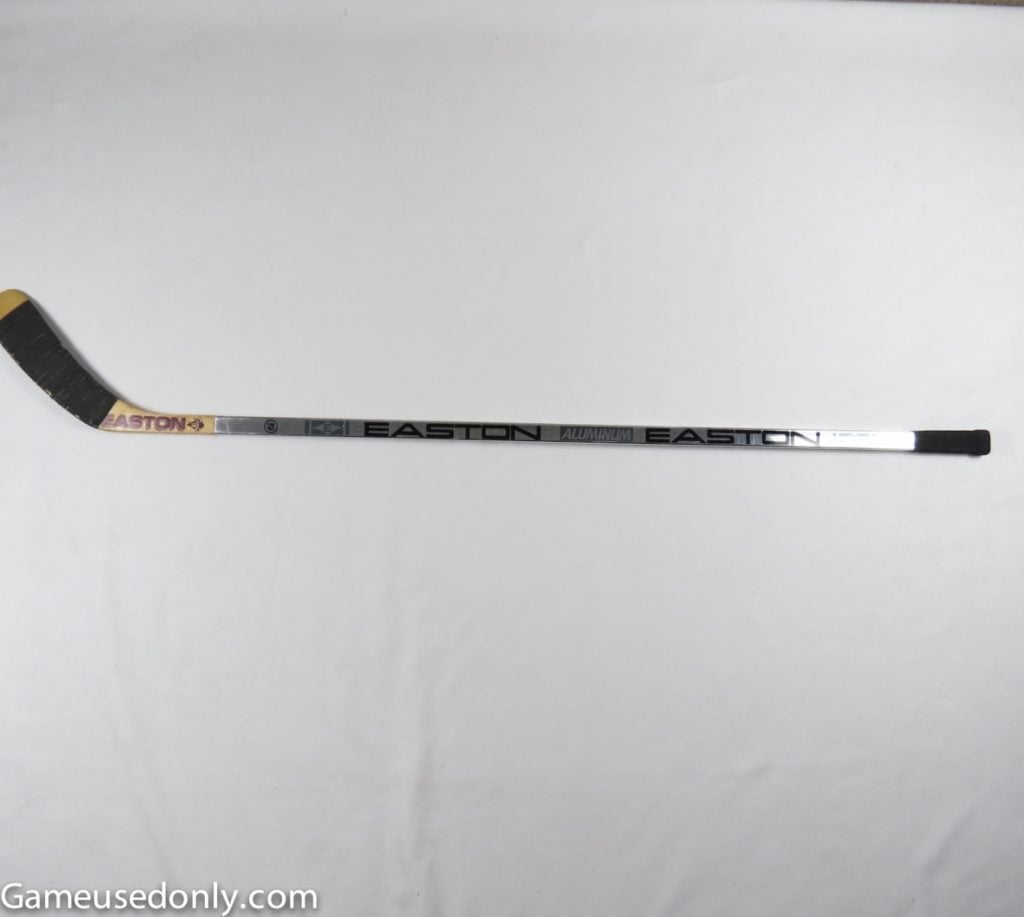Now, folks, let me tell ya about these hockey sticks from back in the day, 1993 to be exact. Back then, you see, hockey sticks were just startin’ to change. They’d been made from wood for the longest time — heavy ol’ ash or hickory, tough as nails, but they weren’t easy to control. That’s what folks had to use, though. Then along comes graphite, right around the early ‘90s, and it starts to stir things up.

Wood to Graphite
So, what’s the big deal with this graphite stuff, you’re wonderin’? Well, I’ll tell ya. See, graphite ain’t like wood. Wood is strong, sure, but heavy as a sack of rocks. And it didn’t bend just right either, so a player had to really put in the effort to shoot the puck. When graphite sticks came along, they were lighter, easier to handle. This graphite stuff, some kind of fancy carbon fiber, it gave the player more control, a bit more whip when they shot. So folks were real excited about that.
Now, I ain’t sayin’ wood sticks weren’t good. They were tough, real tough, lasted a long time, but ya didn’t get the same feel with ’em as you did with these new graphite ones. Folks say that graphite sticks helped them get more power in their shots, and who doesn’t like that, right? Now, the players didn’t have to work so hard just to get the puck movin’ fast.
Graphite Stick Pros and Cons
Now, lemme tell ya, graphite sticks had their good sides and bad sides. Here’s how I see it:

- Lightweight: These sticks were a lot lighter than wood, which made ‘em easier to carry around and play with. You weren’t feelin’ like you’re draggin’ around a log.
- Better Flexibility: Graphite bends a bit more than wood, so it gives a better shot. Players got more power in those shots — real helpful in a game, ya know?
- Quick to Break: But here’s the catch — these graphite sticks, they weren’t as tough as the ol’ wood ones. They’d break on ya faster than a cheap shovel. Players had to replace ‘em more often, which, let me tell ya, wasn’t cheap.
So, there ya have it, graphite sticks gave ya some big advantages but also a little trouble.
Popular Choice for NHL Players
In those days, hockey was changin’ fast. NHL players were startin’ to use these graphite sticks, and before ya knew it, most of the players were usin’ ’em. Carbon fiber, graphite, whatever ya call it, it was light and it helped these pros keep up with the speed of the game. Players liked the feel of the graphite sticks, said it made the puck fly like they wanted.
But let me tell ya, these sticks didn’t last. NHL players would go through a heap of sticks each season. They’d snap one, get another, snap that one too. Graphite sticks just couldn’t take a beating like the old wood ones. But still, they gave players an edge, so that’s what they went for.
Evolution of Hockey Sticks

Now, don’t go thinkin’ graphite was the last stop. Oh no, things kept changin’. Over the years, they started makin’ sticks even fancier, mixin’ graphite with all sorts of things — Kevlar, titanium, you name it. These days, sticks are all kinds of custom-made, one-piece composites, all slick and fancy. But if ya look back, 1993 was the time when graphite made a big splash, and that’s when hockey sticks started to look like the ones we see today.
Conclusion: From Wood to Graphite
So there ya have it, folks. That old switch from wood to graphite in the early ’90s really set the stage for modern hockey. Sure, the graphite sticks had their quirks, breakin’ easy and all, but they brought speed and power, and that’s what folks wanted. Nowadays, hockey sticks are all about that lightweight feel, flexible material, and high-tech design. But it all started with that switch in materials — and if ya ask me, that’s the day hockey sticks got a whole lot fancier.
Tags:1993 hockey sticks, graphite hockey sticks, carbon fiber hockey sticks, hockey stick evolution, wood to graphite hockey sticks















